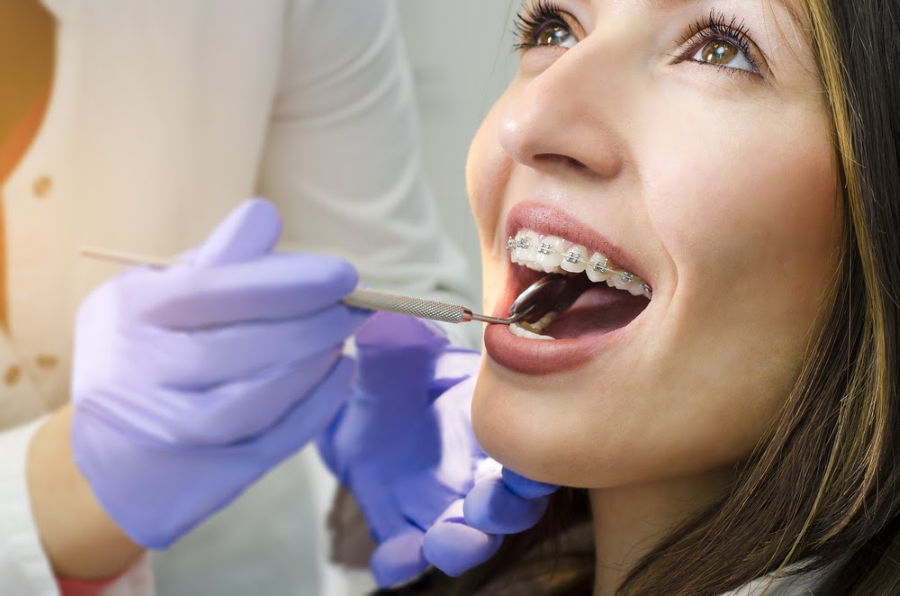What Does Legacy Orthodontics Do?
What Does Legacy Orthodontics Do?
Blog Article
The Buzz on Legacy Orthodontics
Table of ContentsThe Basic Principles Of Legacy Orthodontics The Ultimate Guide To Legacy OrthodonticsThe smart Trick of Legacy Orthodontics That Nobody is DiscussingSome Of Legacy OrthodonticsIndicators on Legacy Orthodontics You Need To Know
In addition, we use adjustable therapy schedules, versatile settlement alternatives and an enjoyable, pleasurable experience.An orthodontist is a dentist trained to diagnose, avoid, and deal with teeth and jaw abnormalities. Orthodontists work with people of all ages, from children to adults.
Malocclusion, or misaligned teeth, can lead to oral concerns, including dental cavity, gum tissue illness, and challenging or unpleasant eating. Not everybody is born with straight teeth. If you have a bad bite or big spaces in between your teeth, you might intend to consult a dental practitioner concentrating on orthodontic care.
The Definitive Guide to Legacy Orthodontics
( Picture Debt: DigitalVision/Getty Images) Orthodontists use dealt with and detachable dental tools, like dental braces, retainers, and bands, to alter the position of teeth in your mouth. Orthodontic therapy is for dental problems, consisting of: Uneven teethBite troubles, like an overbite or an underbiteCrowded teeth or teeth that are also much apartJaw misalignmentThe objective of orthodontic therapy is to boost your bite.
A healthy bite guarantees you can eat, eat, and speak properly. While you might think about orthodontists as mainly for children or teenagers that need dental braces, they can deal with dental problems at any age. Orthodontists go to college, oral college, and orthodontic school. After college graduation, they spend 2 or 3 years in an orthodontic residency program.
All orthodontists are dental practitioners, however not all dental practitioners are orthodontists. Orthodontic residency programs provide intensive, concentrated guideline for oral specialists. They focus on two areas: How to correctly and securely move teeth How to appropriately assist growth in the teeth, jaw, and faceOnce an orthodontist has finished training, they have the alternative to end up being board licensed.
10 Easy Facts About Legacy Orthodontics Described
Malocclusion leads to tooth congestion, an askew jaw, or uneven bite patterns. Malocclusion is normally treated with: Your orthodontist connects steel, ceramic, or plastic square bonds to your teeth.
Some people require a headgear to help relocate teeth into line with stress from outside the mouth. A retainer is a personalized tool that maintains your teeth in location.
They're usually used on youngsters. They can create additional space in the mouth without having to draw teeth. If you have a significant underbite or overbite, you might need orthognathic surgery (likewise called orthodontic surgical procedure) to extend or shorten your jaw. Orthodontists utilize wires, surgical screws, or plates to sustain your jaw bone.
You may require to see an orthodontist if you have: Crowding or otherwise sufficient area for all of your teethOverbite, when your top teeth come by your base teethUnderbite, when your base teeth are too far forwardSpacing or issues with gapsCrossbite, which is when your top teeth fit behind your base teeth when your mouth is closedOpen bite or an you could try here upright space in between your front base and top teethMisplaced midline, when the center of your base and top teeth don't align Dealing with an oral malocclusion can: Make attacking, eating, and speaking easierImprove the balance of our face and your total appearanceEase pain from temporomandibular joint problemsSeparate your teeth and make them easier to clean up, helping protect against dental caries or dental caries It's often a dental expert that initially notifications misaligned teeth during a routine exam.
What Does Legacy Orthodontics Mean?

During your initial orthodontic appointment, you'll likely have: An oral examPhotos taken of your face and smileDental X-raysPanoramic (360 degree) X-rays of your face and headImpressions to produce mold and mildews of your teethThese tests will aid your orthodontist know just how to wage your treatment. orthodontics. An orthodontist is a dental professional that's had training to treat your teeth and jaw
Orthodontists might carry out surgical treatment, exams,X-rays,and more to help you obtain a much more comfy, healthier smile. An orthodontist is concentrated on your bite, so something like a damaged tooth would be dealt with by a dental expert. Orthodontists are dentists yet not all dental experts are orthodontists. Orthodontists are concentrated on your bite, or the means your teeth fit with each other, and the straightness of your teeth.
Ever before questioned exactly how celebs constantly seem to have perfectly aligned teeth? Orthodontists are oral experts who focus on dealing with abnormalities in the teeth and jaws.
Legacy Orthodontics Things To Know Before You Buy

While braces are the most commonly identified orthodontic therapy, orthodontists have a diverse toolkit at their disposal. The details method selected relies on the intensity of the case, the patient's age, and specific preferences. These reliable dental braces utilize a system of brackets adhered to the teeth and linked by wires.
Clear aligners, like Invisalign, are a popular option for people seeking a more discreet treatment choice. These detachable trays are custom-made to progressively move the teeth's position. Headgear may be made use of in conjunction with dental braces or aligners to apply added targeted pressures, specifically for fixing jaw inconsistencies. In instances of narrow jaws, palatal expanders can be utilized to create room for correct tooth alignment.
Report this page